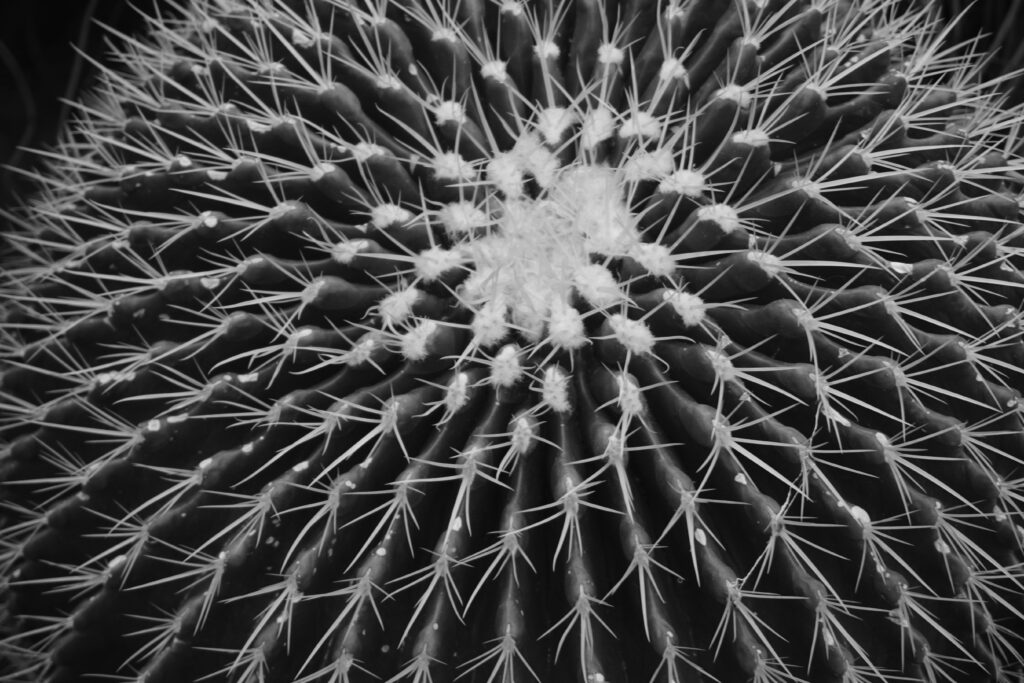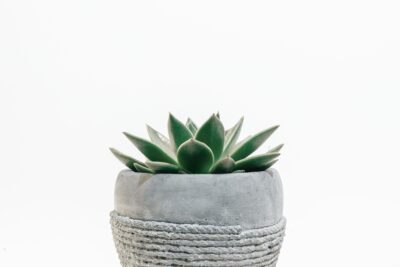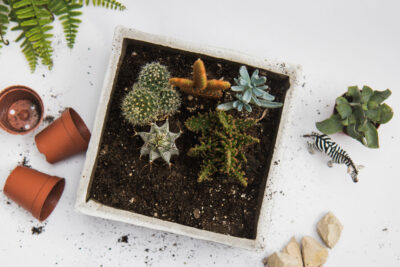
Drought-Tolerant Cacti & Succulents: Discover Low-Water Plants

As climate change continues to impact our planet, the need for water-efficient gardening and landscaping practices becomes increasingly important. One solution to combat water scarcity is to incorporate drought-tolerant plants into our gardens. Cacti and succulents are excellent choices for low-water landscapes due to their ability to store water in their fleshy leaves and stems, making them resilient in arid conditions.
We will explore the world of drought-tolerant cacti and succulents and discover the wide variety of options available for creating stunning and sustainable gardens. We will delve into the unique characteristics of these plants and how they have adapted to survive in harsh environments. Additionally, we will provide practical tips and advice on how to care for these low-water plants, including the best watering practices, suitable soil types, and ideal placement in your garden. Whether you are a seasoned gardener looking to expand your plant collection or a beginner wanting to create a water-wise oasis, this article will guide you through the fascinating world of drought-tolerant cacti and succulents.
- Use cacti and succulents in your garden to save water
- Choose plants like agave and aloe vera that require minimal watering
- Incorporate gravel and rocks into the soil to help with water drainage
- Plant cacti and succulents in containers with proper drainage holes
- Water your plants deeply but infrequently to encourage deep root growth
- Mulch around your plants to help retain moisture in the soil
- Group cacti and succulents together to create a microclimate that reduces water evaporation
- Choose native cacti and succulents that are adapted to your local climate
- Install a drip irrigation system to provide water directly to the plants' roots
- Consider using rainwater harvesting techniques to water your cacti and succulents
- Frequently Asked Questions
Use cacti and succulents in your garden to save water
When it comes to creating a beautiful and sustainable garden, using drought-tolerant plants is key. One group of plants that excels in this area is cacti and succulents. These unique and fascinating plants have evolved to thrive in arid climates, making them the perfect choice for water-wise gardening.
What are cacti and succulents?
Cacti and succulents are plants that have adapted to survive in dry conditions by storing water in their leaves, stems, or roots. This water storage allows them to withstand long periods of drought without requiring frequent watering.
Cacti are a type of succulent that belong to the Cactaceae family. They are known for their distinctive appearance, with spines or thorns and fleshy stems. Cacti are native to the Americas and are found in a wide range of habitats, from deserts to rainforests.
Succulents, on the other hand, are a broader category of plants that includes cacti as well as other water-storing plants. Succulents come in various shapes, sizes, and textures, but they all share the ability to retain water in their tissues.
 Optimal Sunlight Duration for Succulents: How Much is Enough?
Optimal Sunlight Duration for Succulents: How Much is Enough?Benefits of using drought-tolerant cacti and succulents
By incorporating drought-tolerant cacti and succulents into your garden, you can enjoy several benefits:
- Water conservation: Cacti and succulents require significantly less water than traditional garden plants. Their ability to store water allows them to withstand dry spells and reduce the need for frequent irrigation.
- Low maintenance: These plants are incredibly low maintenance and require minimal care once established. They are perfect for busy individuals or those looking to reduce their gardening workload.
- Diverse range of options: Cacti and succulents come in a vast array of sizes, shapes, and colors. From towering saguaros to delicate aeoniums, there is a cactus or succulent to suit every taste and garden style.
- Unique aesthetic appeal: The striking and often unusual shapes of cacti and succulents can add a touch of exotic beauty to any garden. Their textures and colors create visually captivating landscapes that stand out from traditional floral displays.
- Adaptability: Cacti and succulents are highly adaptable and can thrive in various growing conditions. Whether you have a sunny spot, a shaded corner, or even limited space, there is a cactus or succulent that can flourish in your garden.
How to incorporate cacti and succulents into your garden
Here are a few tips to help you successfully incorporate drought-tolerant cacti and succulents into your garden:
- Choose the right plants: Research the specific water and sunlight requirements of different cacti and succulent varieties to ensure they are suitable for your garden's conditions.
- Provide well-draining soil: Cacti and succulents dislike soggy soil, so make sure to use a well-draining soil mix that allows excess water to escape.
- Consider container gardening: If you have limited space or want to create a portable garden, growing cacti and succulents in containers is an excellent option. Just ensure the pots have drainage holes.
- Group plants with similar needs: Arrange your cacti and succulents based on their water and sunlight requirements. This will make it easier to maintain and care for them.
- Protect from frost: While most cacti and succulents are drought-tolerant, they may still require protection from frost. If you live in a cold climate, bring them indoors during the winter months or provide them with adequate insulation.
By incorporating drought-tolerant cacti and succulents into your garden, you can create a visually stunning landscape while conserving water and reducing maintenance. These low-water plants are not only practical but also bring a unique and captivating charm to any outdoor space. So why not embrace the beauty of cacti and succulents and create a sustainable oasis in your garden?
Choose plants like agave and aloe vera that require minimal watering
When it comes to creating a low-water garden, drought-tolerant cacti and succulents are the perfect choice. These resilient plants have adapted to survive in arid conditions, making them ideal for regions with limited water resources or for gardeners looking to conserve water. Among the wide variety of low-water plants, agave and aloe vera stand out as popular choices.
Agave plants, also known as century plants, are renowned for their ability to withstand drought. With their fleshy, succulent leaves and rosette shape, agave plants store water efficiently, allowing them to thrive in dry environments. They come in various sizes and colors, adding architectural interest to any garden or landscape.
Aloe vera, on the other hand, is not only a drought-tolerant succulent but also boasts numerous health benefits. This versatile plant not only requires minimal watering but also has medicinal properties. Known for its soothing gel, aloe vera can be used to treat burns, moisturize the skin, and even promote hair growth.
Accelerate Succulent Growth: Unveiling Tricks for DevelopmentBenefits of choosing drought-tolerant cacti and succulents:
- Water conservation: By opting for low-water plants like agave and aloe vera, you can significantly reduce water consumption in your garden.
- Low maintenance: These plants have adapted to survive with minimal care, making them an excellent choice for busy gardeners or those with limited gardening experience.
- Diverse range of shapes and sizes: Drought-tolerant cacti and succulents come in various forms, from small, spiky cacti to large, architectural agave plants. You can easily find plants that suit your aesthetic preferences and the size of your garden.
- Year-round interest: Many cacti and succulents bloom with vibrant flowers or produce unique shapes and textures, ensuring that your garden remains visually appealing throughout the year.
By incorporating drought-tolerant cacti and succulents, such as agave and aloe vera, into your garden, you can create a stunning, water-efficient landscape that thrives even in dry conditions. Not only will you be conserving water, but you'll also be enjoying the beauty and resilience of these remarkable plants.
Incorporate gravel and rocks into the soil to help with water drainage
When it comes to creating a drought-tolerant garden, one of the key factors to consider is proper water drainage. Cacti and succulents thrive in well-draining soil, as they are adapted to arid climates with limited rainfall. Incorporating gravel and rocks into the soil can significantly improve water drainage, preventing root rot and other issues caused by excess moisture.
1. Choose the right type of gravel
Not all types of gravel are suitable for cacti and succulents. Opt for coarse-grained gravel or crushed rock that allows water to flow freely through the soil. Avoid fine-grained gravel, as it can compact and hinder drainage.
2. Mix gravel and rocks into the soil
Before planting your cacti and succulents, add a layer of gravel or rocks to the bottom of the planting hole. Then, mix a generous amount of gravel into the soil to create a well-draining blend. This will help excess water to quickly drain away from the roots.
3. Create a gravel mulch
 Winter-Resilient Succulents: Thriving Despite the Cold Season
Winter-Resilient Succulents: Thriving Despite the Cold SeasonIn addition to incorporating gravel into the soil, consider adding a layer of gravel or crushed rock on top of the soil surface. This acts as a mulch, preventing evaporation and reducing weed growth. The gravel mulch also helps to retain moisture around the roots while allowing excess water to drain away.
4. Use raised beds or containers
If your soil has poor drainage, consider planting your cacti and succulents in raised beds or containers. This allows you to control the soil composition and ensure proper drainage by layering gravel at the bottom.
5. Monitor and adjust watering
Even with excellent drainage, it's important to monitor and adjust your watering practices. Cacti and succulents are adapted to survive with minimal water, so overwatering can be detrimental. Allow the soil to dry out completely before watering again, and be cautious during rainy periods to avoid waterlogged conditions.
By incorporating gravel and rocks into the soil, you can create the ideal growing conditions for drought-tolerant cacti and succulents. Remember to choose the right type of gravel, mix it into the soil, create a gravel mulch, consider raised beds or containers, and adjust your watering practices accordingly. With these strategies, you'll be well on your way to a thriving low-water garden.
Plant cacti and succulents in containers with proper drainage holes
 Is Vermiculite Suitable for Succulent Plants?
Is Vermiculite Suitable for Succulent Plants?When it comes to growing drought-tolerant cacti and succulents, one of the most important factors to consider is the type of container you use. These plants are adapted to thrive in arid conditions, which means they can easily succumb to root rot if their roots are constantly sitting in wet soil.
To ensure your cacti and succulents stay healthy and hydrated without drowning, it's crucial to plant them in containers with proper drainage holes. This allows excess water to escape and prevents waterlogging, which can be detrimental to these low-water plants.
When selecting a container, opt for one made of a porous material, such as terracotta or unglazed ceramic. These materials allow for better airflow and moisture evaporation, helping to prevent overwatering. Avoid containers made of non-porous materials like plastic or glass, as they can trap moisture and increase the risk of root rot.
Once you have chosen the right container, make sure it has enough drainage holes at the bottom. These holes will allow excess water to escape, preventing water from pooling at the bottom of the container. Typically, one large drainage hole or multiple smaller ones will suffice.
Additionally, consider adding a layer of coarse gravel or small stones at the bottom of the container before adding the potting mix. This will further aid in drainage by creating a space for excess water to collect without saturating the soil.
Remember, proper drainage is key to keeping cacti and succulents happy and healthy. By planting them in containers with adequate drainage holes and using the right materials, you can ensure they receive the right amount of water without risking root rot.
Water your plants deeply but infrequently to encourage deep root growth
Water your plants deeply but infrequently to encourage deep root growth
 Succulent Plants: Unveiling the Floral Secrets of Blooming
Succulent Plants: Unveiling the Floral Secrets of BloomingWhen it comes to drought-tolerant cacti and succulents, proper watering techniques are key to their survival. Unlike other plants that require frequent watering, these low-water plants thrive in arid environments and have adapted to store water in their leaves, stems, or roots.
One of the most important things to remember when watering your cacti and succulents is to do it deeply but infrequently. This encourages the development of deep root systems, which in turn helps the plants access water stored deeper in the soil.
Here are a few tips on how to water your drought-tolerant plants effectively:
- Observe the soil moisture: Before watering, check the moisture level of the soil. Stick your finger about an inch into the soil and if it feels dry, it's time to water. Avoid watering if the soil still feels moist.
- Water sparingly: When it's time to water, do it sparingly. Aim to moisten the soil evenly, but avoid overwatering, as this can lead to root rot.
- Water the base: Direct the water towards the base of the plant rather than spraying it over the entire foliage. This helps prevent excess moisture on the leaves, which can lead to fungal diseases.
- Use well-draining soil: Ensure your cacti and succulents are potted in a well-draining soil mix. This allows excess water to escape quickly, preventing waterlogged roots.
- Consider the weather: Adjust your watering schedule based on the weather conditions. During hot, dry spells, you may need to water more frequently. In cooler or humid periods, reduce watering to avoid waterlogged soil.
By following these watering techniques, you can ensure the health and longevity of your drought-tolerant cacti and succulents. Remember, it's better to underwater than overwater these plants, as they are adapted to survive in low-water conditions.
Mulch around your plants to help retain moisture in the soil
One of the most effective ways to conserve water in your garden is to use mulch around your cacti and succulents. Mulch acts as a protective layer that helps retain moisture in the soil, reducing evaporation and the need for frequent watering.
When choosing mulch for your drought-tolerant plants, opt for organic materials such as wood chips, straw, or bark, as they will gradually decompose and enrich the soil with nutrients. Avoid using plastic or synthetic mulch, as they can hinder water absorption and harm the plants.
 The Best Time to Plant Succulents for Optimal Growth and Success
The Best Time to Plant Succulents for Optimal Growth and SuccessApplying a layer of mulch around your cacti and succulents has multiple benefits. Firstly, it helps regulate soil temperature, keeping it cooler during hot summer days and warmer during cooler nights. This can be particularly beneficial for cacti and succulents, as they are adapted to thrive in arid climates.
Additionally, mulch acts as a barrier, preventing weed growth around your plants. Weeds compete with cacti and succulents for water and nutrients, so by suppressing weed growth, mulch helps your low-water plants maintain their vitality.
When applying mulch, make sure to leave a small gap around the base of the plants to prevent moisture buildup, which could lead to rot. Aim for a thickness of 2-3 inches, ensuring that the mulch covers the entire root zone of your cacti and succulents.
Remember to periodically check the moisture level of the soil beneath the mulch and adjust your watering schedule accordingly. While mulch helps retain moisture, it is essential to strike a balance and avoid overwatering your drought-tolerant plants.
By incorporating mulch into your gardening routine, you can create a sustainable and water-efficient environment for your cacti and succulents. So go ahead and give your plants the gift of mulch, and watch them thrive even in the driest of conditions!
Group cacti and succulents together to create a microclimate that reduces water evaporation
When it comes to creating a low-water garden, cacti and succulents are the perfect choice. These resilient plants have adapted to survive in arid environments by storing water in their leaves, stems, or roots. By grouping them together, you can create a microclimate that helps to reduce water evaporation and conserve moisture in the soil.
 Is My Succulent Getting Too Much Sun? Signs to Watch Out For
Is My Succulent Getting Too Much Sun? Signs to Watch Out ForHere are some key benefits of grouping cacti and succulents:
- Reduced water loss: When cacti and succulents are placed close together, they create shade and reduce the exposure of the soil to direct sunlight. This shading effect helps to minimize water evaporation, allowing the plants to retain moisture for longer periods.
- Improved humidity: Cacti and succulents release moisture into the surrounding air through a process called transpiration. By grouping them together, you can increase the humidity levels within the microclimate, which is beneficial for the overall health and growth of these plants.
- Enhanced protection: When cacti and succulents are grouped together, they provide natural protection to each other. The spines and thorns of cacti act as a deterrent to potential predators, while the dense foliage of succulents can create a barrier against strong winds, reducing water loss through wind exposure.
Here are a few tips to consider when grouping cacti and succulents:
- Similar water and light requirements: Make sure to group cacti and succulents that have similar water and light needs. This will ensure that they thrive together and receive the appropriate care.
- Vary heights and textures: Create visual interest by selecting cacti and succulents with different heights, colors, and textures. This will add dimension and beauty to your garden while also preventing the spread of pests and diseases.
- Allow for growth: Leave ample space for the plants to grow and spread out. As cacti and succulents mature, they may require more room to accommodate their increasing size. Plan ahead and provide enough space for their expansion.
By grouping cacti and succulents together, you can create a stunning low-water garden that not only conserves water but also adds a touch of unique beauty to your landscape. So, why wait? Start experimenting with different combinations and create your very own drought-tolerant oasis!
Choose native cacti and succulents that are adapted to your local climate
When it comes to creating a low-water garden, choosing native cacti and succulents that are adapted to your local climate is key. These plants have evolved to thrive in specific regions, making them naturally drought-tolerant and well-suited to the unique conditions of your area.
Before selecting specific species, it's essential to research the native cacti and succulents that are indigenous to your region. Look for plants that are known to withstand the heat, dryness, and lack of rainfall typically experienced in your area. Consulting with local horticulturists or visiting nearby botanical gardens can provide valuable insights into the best choices for your climate.
Benefits of choosing native cacti and succulents
Opting for native cacti and succulents offers numerous benefits. Firstly, these plants have already proven their ability to adapt and thrive in your local environment. By choosing native species, you are increasing the chances of success in your garden.
 Can Succulents Be Harmed by Excessive Sunlight Exposure?
Can Succulents Be Harmed by Excessive Sunlight Exposure?Additionally, native cacti and succulents often require less maintenance compared to non-native varieties. They are already acclimated to the soil, temperature, and water conditions of your region, reducing the need for extra care and resources.
Moreover, using native plants in your garden promotes biodiversity and supports local ecosystems. Native cacti and succulents attract and provide habitat for local pollinators like bees and butterflies, contributing to the overall health of your garden and surrounding environment.
Consider the specific water needs of each plant
While cacti and succulents, in general, are known for their ability to withstand drought conditions, it's essential to consider the specific water needs of each plant. Some species may require slightly more water than others, depending on their natural habitat and growth patterns.
For instance, certain types of cacti thrive in arid deserts and can survive with minimal watering, while others prefer a more moderate moisture level. Succulents, on the other hand, store water in their leaves or stems, allowing them to survive extended periods without irrigation.
Before planting, familiarize yourself with the water requirements of the cacti and succulents you have chosen. This knowledge will help you establish an appropriate watering schedule and prevent overwatering, which can be detrimental to these low-water plants.
Implement efficient watering techniques
When it comes to watering your drought-tolerant cacti and succulents, it's crucial to adopt efficient techniques that maximize water conservation. Here are a few strategies to consider:
- Water deeply but infrequently: Instead of frequent shallow watering, give your plants a deep soak to encourage deep root growth. This helps them access water stored deeper in the soil.
- Use drip irrigation: Drip irrigation systems deliver water directly to the base of each plant, minimizing water loss through evaporation and ensuring targeted watering.
- Mulch: Apply a layer of organic mulch around your cacti and succulents to retain moisture, reduce weed growth, and protect the roots from extreme temperatures.
- Collect and reuse rainwater: Install a rain barrel or a similar system to collect rainwater, which can then be used to irrigate your plants during dry periods.
By implementing these watering techniques, you can efficiently provide your cacti and succulents with the necessary moisture while minimizing water waste.
 Understanding Succulent Dormancy: Timing and Duration Explained
Understanding Succulent Dormancy: Timing and Duration ExplainedRemember, the key to successfully cultivating drought-tolerant cacti and succulents lies in choosing native species, understanding their water requirements, and adopting efficient watering practices. With these strategies in place, you can create a beautiful, low-water garden that thrives even in the harshest of climates.
Install a drip irrigation system to provide water directly to the plants' roots
One of the most effective ways to ensure that your drought-tolerant cacti and succulents receive the right amount of water is by installing a drip irrigation system. Unlike traditional sprinklers that spray water over a wide area, drip irrigation delivers water directly to the plants' roots, minimizing wastage and maximizing efficiency. This method is particularly beneficial for cacti and succulents, as it prevents water from pooling around their sensitive stems and leaves, which can lead to rot and other diseases.
The first step in setting up a drip irrigation system is to gather the necessary materials. You will need a drip irrigation kit, which typically includes a main line, drip tubing, emitters, and connectors. Additionally, you may need a pressure regulator, backflow preventer, and a timer if you want to automate the watering process.
Once you have all the materials, it's time to plan the layout of your drip irrigation system. Consider the spacing between your cacti and succulents, as well as any existing pathways or garden structures. The goal is to ensure that every plant receives adequate water without causing oversaturation or waterlogging.
Start by connecting the main line to your outdoor water source, such as a faucet or hose bib. If necessary, install a pressure regulator to control the water pressure and a backflow preventer to avoid contamination of your water supply. From the main line, run the drip tubing along the base of each plant, making sure to leave enough slack for future growth.
Next, attach emitters to the drip tubing near the plants' roots. Emitters come in various flow rates, so choose ones that match the water needs of your cacti and succulents. For example, smaller emitters work well for low-water plants, while larger emitters are suitable for those that require more moisture.
Finally, test your drip irrigation system to ensure everything is functioning correctly. Turn on the water and observe if the emitters are delivering water evenly to each plant. Adjust the flow rate or position of the emitters as needed. Additionally, consider installing a timer to automate the watering schedule and conserve water.
 Discover the Spectacular Bloom Time of Sunrise Succulents
Discover the Spectacular Bloom Time of Sunrise SucculentsBy installing a drip irrigation system, you can provide your drought-tolerant cacti and succulents with a consistent and efficient water source. This method not only saves water but also helps promote healthy growth and reduces the risk of overwatering. So, take the time to set up a drip irrigation system and enjoy the beauty of your low-water plants without the worry of drought-related issues.
Consider using rainwater harvesting techniques to water your cacti and succulents
When it comes to watering your cacti and succulents, using rainwater can be a great option. Not only is it a sustainable choice, but it also provides the plants with the ideal water they need to thrive in arid conditions.
Rainwater is free from chemicals, such as chlorine or fluoride, that are often found in tap water. These chemicals can be harmful to cacti and succulents, as they prefer well-draining soil and can be sensitive to excessive mineral content.
To make the most of rainwater, consider implementing rainwater harvesting techniques. One common method is to place rain barrels or large containers strategically around your property to collect rainwater from downspouts or gutters. You can then use this stored rainwater to water your cacti and succulents during dry spells.
Benefits of using rainwater on cacti and succulents
- Reduced mineral build-up: Rainwater is naturally low in minerals, which helps prevent the build-up of salts that can be harmful to cacti and succulents.
- Balanced pH levels: Tap water often has a higher pH level, which can disrupt the plants' natural pH balance. Rainwater, on the other hand, provides a neutral pH that suits cacti and succulents.
- Increased oxygen availability: Rainwater is oxygen-rich, which promotes healthy root growth and overall plant health.
- Cost-effective: By using rainwater, you reduce your reliance on municipal water sources, leading to potential cost savings on your water bills.
- Eco-friendly: Rainwater harvesting is a sustainable practice that contributes to water conservation and reduces the strain on local water supplies.
Remember to always use a container or watering can with a fine nozzle when watering your cacti and succulents. This allows for a gentle and controlled water flow, preventing damage to the plants' delicate roots.
Utilizing rainwater harvesting techniques is a beneficial and eco-friendly way to provide your drought-tolerant cacti and succulents with the water they need to thrive. By incorporating this sustainable practice into your gardening routine, you can ensure the health and longevity of these low-water plants.
Frequently Asked Questions
1. What are drought-tolerant cacti and succulents?
Drought-tolerant cacti and succulents are plants that have adapted to survive in arid environments by storing water in their leaves, stems, or roots.
2. How often do drought-tolerant cacti and succulents need to be watered?
Drought-tolerant cacti and succulents have low water requirements and should be watered sparingly, typically every 2-3 weeks or when the soil is completely dry.
3. Can drought-tolerant cacti and succulents be grown indoors?
Yes, many drought-tolerant cacti and succulents can be grown indoors as long as they have access to bright sunlight and are planted in well-draining soil.
4. How do I care for drought-tolerant cacti and succulents during the winter?
During the winter, it is important to reduce watering and provide sufficient light for indoor plants. Outdoor plants should be protected from frost and excessive moisture.
If you want to read more articles similar to Drought-Tolerant Cacti & Succulents: Discover Low-Water Plants, you can visit the Growing Conditions category.






You Must Read